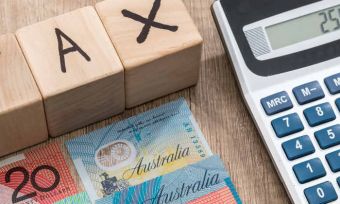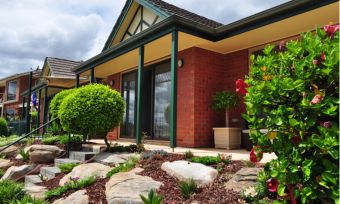Looking for tax deductions for property investors? Investment properties often contain tens of thousands of dollars worth of tax deductions that only a trained eye would detect. Here’s a look at five hidden tax deductions for property investors that may be missed.
Investment property tax deductions can be concealed behind walls, in ceilings, under floors and on roofs. The combined value of these tax deductions can reach tens of thousands of dollars and make a significant difference to a property investor’s bottom line.
The deduction we are talking about is property depreciation. Depreciation is the natural wear and tear of property and assets and is one of the highest tax deductions available to property investors, who can claim it for up to 40 years.
How depreciation works
Depreciation is generally claimed under two categories: capital works and plant and equipment.
Capital works
A building’s structure and fixed assets can be depreciated. Examples include windows, doors, locks, door handles, bathtubs, walls, floor and roof. Claiming capital works deductions is relatively straightforward. It is calculated at a constant annual rate as follows:
- 4% over 25 years for properties that commenced construction between 18 July, 1985 and 15 September, 1987.
- 2.5% over 40 years for properties constructed from 15 September, 1987 onward.
Properties built before 1985 could still hold capital works deductions. Renovated properties often carry significant capital works deductions, even if the renovation was completed by a previous owner.
Plant and equipment
Plant and equipment depreciation deductions can be claimed for easily removable and mechanical fixtures and fittings that are not considered to be previously used in residential properties. Examples include blinds and curtains, security systems, light fittings and hot water systems.
Calculating plant and equipment is more complex than capital works. Each asset’s condition, quality and effective life all determine the allowances available.
There are two methods that can be used to depreciate plant and equipment assets – the diminishing value method and the prime cost method. Both methods use the same asset start values but achieve different short and long-term deductions and therefore cash flow outcomes.
Not only can it be tricky to accurately calculate depreciation deductions, but it can also be hard to find them at all.
Here are five examples of investment property deductions that are commonly overlooked which, if added up, could yield total depreciation deductions of around $60,000.
1. Underfloor heating: $10,000
There are many pros to installing underfloor heating – it’s energy-efficient, safe and discreet in appearance. The con is that it can be costly to install, but this cost can be somewhat offset by the significant depreciation deductions it can produce.
Given that underfloor heating is an ‘unseen’ depreciable asset, it is quite often overlooked. Underfloor heating is a capital works asset. Based on a 200 square metre house, it would be reasonable to expect total depreciation deductions of around $10,000 for underfloor heating.
2. Restumping of a home: $13,000
Restumping, also known as re-blocking, is when the existing stumps under a house are replaced due to soil movement or damaged wood. It involves jacking up the house, removing the existing stumps and replacing them (often substituting wood for concrete). It is usually required for older properties.
If you’re planning major renovations, it is important to review the existing stumps to make sure the house can withstand the changes. Restumping is also a capital works deduction and typically produces a depreciation deduction in the vicinity of $13,000.
3. Electrical and plumbing: $16,000
When an investment property is old or has been damaged, re-wiring and re-plumbing may be required. You may even be able to claim for improvements completed by a previous owner. Given that wiring and plumbing mostly sits behind walls, it is another capital works depreciation deduction that is commonly missed. It’s worth looking out for, though, as these items could produce total depreciation deductions of about $16,000.
4. Solar pool heating: $7,000
If you have an investment property with a swimming pool and you want to make it functional all year round, solar heating can be a way to keep the water pleasantly warm in the colder months. Solar heating can be one of the most cost-effective ways to heat a swimming pool, saving your tenants a lot of money in energy bills.
Solar pool heating systems are often tucked away on the roof, so could easily go unnoticed when calculating depreciation. Solar pool heating systems are plant and equipment assets that typically produce total depreciation deductions of around $7,000 (using the diminishing value method).
5. Sewerage treatment assets: $12,000
It’s common for a rural property to have its own sewerage treatment assets and tanks, but they can easily be overlooked as they are “out of sight, out of mind”. Underground sewerage treatment tanks and piping are capital works that can produce a total depreciation deduction of around $12,000.
There are many items that only a trained eye, such as that of a specialist quantity surveyor, would find. This is why a physical site inspection can be valuable. The key message to property investors is to never rule out depreciation. Throw out the idea that your property might be too old, or you haven’t owned it for long enough – these are simply myths.
Main image source: Africa Studio/Shutterstock.com
About Bradley Beer
Bradley Beer has been the CEO of BMT Tax Depreciation since 2015, after joining in 1998 as a quantity surveyor. Bradley has an extensive property portfolio, having purchased his first investment property in 2001. He is a regular keynote speaker and presenter covering property depreciation services on television and radio, and at conferences and exhibitions around Australia. You can find him on Linkedin.
This content was reviewed by Sub Editor Jacqueline Belesky and Editorial Campaigns Manager Maria Bekiaris as part of our fact-checking process.








Share this article